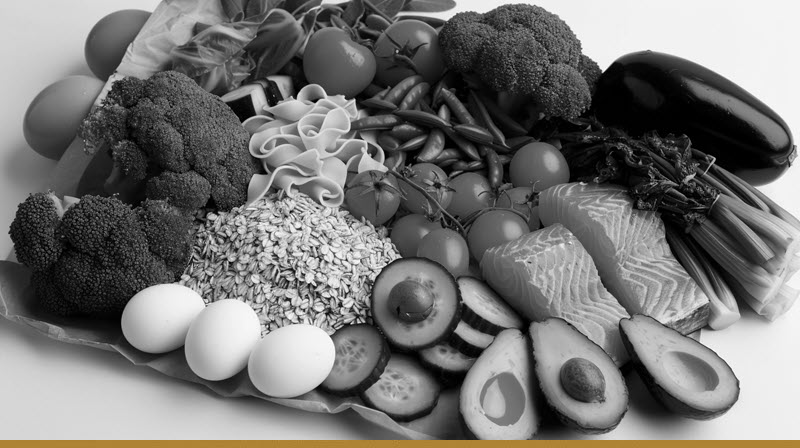Food has always been more than just a requirement for survival. Since ancient times, it has played a vital role in many aspects of life, including religious, social, cultural, artistic, and environmental. However, with industrialization and the consequent abundance and ease of access to food, new problems have arisen, among them growing obesity levels, food addictions, and a distorted relationship with food.
The rise of various diets in the past decades mirrors our new preoccupation with food. Among them, the flexitarian diet has emerged as one of the trendiest, health-conscious, and eco-friendly eating plans of the 21st century.
This article explains how a flexitarian diet works, outlines its potential health and environmental benefits and provides a weekly meal plan.

The flexitarian diet is a flexible eating plan that incorporates primarily plant-based foods, with occasional intake of meat and dairy products. The term was coined from the words “flexible” and “vegetarian,” denoting its flexible structure and predominantly vegetarian food choices. It was popularized in the 2000s by dietitian Dawn Jackson Blatner, who wrote a book with the same title and advocated this nutritional approach as a lifestyle rather than a diet.
The flexitarian diet differs from most diets in that it doesn’t have strict rules about what foods and amounts to consume. It relies on plant-based foods but allows occasional or limited consumption of meats. It also emphasizes healthy nutritional choices and limits processed foods, refined carbohydrates, and added sugars.
Note: Learn about similar anti-inflammatory diets and why health experts endorse them.
The flexitarian diet follows the principles of the vegetarian or vegan diet with occasional meat consumption. The diet primarily consists of fruits, vegetables, whole grains, nuts, seeds, herbs, and spices.
People starting out gradually reduce meat portions, and this typically occurs in three stages.
Animal protein in the flexitarian diet is replaced with plant protein, such as beans, soybeans, tofu, lentils, chickpeas, and other legumes and pulses. When people do eat animal protein, it should come from organic, pasture-raised, grass-fed sources.
Most benefits from this dietary approach are anecdotal or inferred from research on vegetarian and vegan diets.
Like other plant-based diets, the flexitarian diet decreases the risk of cardiovascular diseases associated with prolonged consumption of meat, particularly red and processed meats. Eating more plants and avoiding meat is shown to decrease cholesterol, improve blood pressure, and lower the risk of insulin resistance and obesity.
Several studies suggest that a diet focused on plant-based foods rich in vitamins and antioxidants and a reduced intake of red and processed meats helps to prevent and manage type 2 diabetes. Such dietary habits can improve insulin sensitivity, systemic inflammation, body weight, and body mass index, all of which are important factors in the development of type 2 diabetes.
Flexitarianism is not a typical diet but a lifestyle. People who consistently follow its basic principles, such as mainly eating vegetables, fruits, and grains and avoiding processed and sugary foods, often experience weight loss. Semi-vegetarians have a lower body mass index than meat-eaters, while vegetarians have the lowest BMI score.
The flexitarian diet ensures a high intake of fiber, antioxidants, and other beneficial nutrients. These vital compounds help maintain a healthy balance of gut microbiota and reduce systemic inflammation, preventing gut problems (especially inflammatory bowel diseases such as Crohn’s). People who adhere to plant-based diets have significantly improved macronutrient profiles and healthier eating habits, which lowers the risk of gut dysbiosis.
The World Health Organization classifies processed meat as carcinogenic and red meat as probably carcinogenic. Individuals who follow an entirely plant-based or flexitarian diet may reduce their risk of certain types of cancer. Research on colorectal cancer confirms a semi-vegetarian diet carries a lower risk of cancer than a carnivorous diet.
Many flexitarians choose this dietary approach due to its environmental impact. By reducing meat consumption and livestock farming, they help decrease water usage, land degradation, greenhouse gas emissions, and pollution.
Plant-based diets provide numerous health benefits, but they may increase the risk of nutrient deficiencies. Some nutrients are found mainly in animal products, including:
People who follow a plant-based diet should regularly monitor their nutrient levels and consider including dietary supplements to improve or prevent vitamin and mineral deficiencies.
Meat is also a leading source of protein that the body can easily absorb and use. People who follow the flexitarian diet have the advantage over vegans and vegetarians in that they can occasionally eat protein-rich meats and dairy. They should also increase the consumption of protein-rich plants, such as legumes, nuts, and whole grains.
The flexitarian diet food staples include:
Vegetables – The recommendation is to eat at least five portions of vegetables daily. Each meal should contain half a plate of salad, leafy greens, or other fiber-rich vegetables.
Legumes and pulses – Beans, peas, lentils, chickpeas, soybeans, lupins, and other legumes and pulses are high in protein, dietary fiber, and complex carbohydrates. They ensure adequate protein intake.
Whole grains – Whole wheat, buckwheat, barley, oats, quinoa, brown rice, and other whole grains are packed with dietary fiber, iron, magnesium, zinc, selenium, protein, and some B vitamins. With legumes, they are the primary source of protein for plant-based eaters.
Fruits – The flexitarian diet recommends eating one or two portions of fruits daily, especially those rich in antioxidants, such as berries, apples, oranges, and grapes. Bananas are also recommended as a good source of potassium and fiber.
Nuts and Seeds – Nuts and seeds are excellent sources of essential fatty acids, protein, fiber, and some vitamins and minerals. They include walnuts, peanuts, almonds, hazelnuts, sesame seeds, chia seeds, flax seeds, etc.
Spices – Flexitarians use spices in their everyday meals to enhance the taste and enjoy the herbs’ health benefits. Common spices include turmeric, rosemary, mint, thyme, ginger, oregano, cinnamon, etc.
Animal-based foods – The flexitarian diet allows occasional consumption of animal products, including eggs, dairy, and meat. These foods are typically organic and sourced from pasture-raised, grass-fed, hormone-free animals. The flexitarian preferred choice of meat is poultry and fish.
Proponents of the flexitarian diet recommend limiting or eliminating the following foods:
This sample plan includes meals for the entire week and caters to flexitarians who have become accustomed to a weekly meat intake of 9 oz.
| Day 1 | |||
| Breakfast | Snack | Lunch | Dinner |
| Oatmeal with almond milk, a handful of nuts (walnuts, almonds, hazelnuts), and blueberries. | Celery sticks and hummus. | A whole grain tortilla with corn, black beans, tomatoes, cucumbers, and grated cheese. | Roast vegetables with quinoa and tofu. |
| Day 2 | |||
| Breakfast | Snack | Lunch | Dinner |
| Omelette with mushrooms and bell peppers. | Apple and peanut butter. | Lentil soup and mixed greens. | Pasta with soybean and tomato sauce. |
| Day 3 | |||
| Breakfast | Snack | Lunch | Dinner |
| Spelt pancakes with maple syrup, chopped nuts, and raspberries. | Medium apple. | Cooked quinoa and bean salad in a lettuce wrap. | Salmon and brown rice with green beans, olives, and feta |
| Day 4 | |||
| Breakfast | Snack | Lunch | Dinner |
| Avocado and cheese on a bagel toast with bell peppers. | Blackberries and walnuts. | Chickpeas with chopped kale, tomatoes, and roasted sweet potato cubes. | Greek salad with edamame. |
| Day 5 | |||
| Breakfast | Snack | Lunch | Dinner |
| Barley porridge with almond milk, nuts, and cinnamon. | Banana. | Black beans and corn-stuffed portobello mushrooms and lettuce salad. | Oven-cooked cauliflower with parmesan and tomato salad. |
| Day 6 | |||
| Breakfast | Snack | Lunch | Dinner |
| Low-fat Greek yogurt with almonds and raspberries. | Carrots and hummus. | A whole grain tortilla with tofu, kidney beans, red onion, avocado, and shredded lettuce. | Pasta with tuna and broccoli. |
| Day 7 | |||
| Breakfast | Snack | Lunch | Dinner |
| Rye bread, hummus, one boiled egg, and mixed greens. | A handful of nuts and raisins. | Turkey breast, sweet potatoes, and broccoli. | Mixed greens, olives, tomatoes, cucumbers, and feta salad. |
The increasing interest in the flexitarian diet can be attributed to its healthy eating preferences, flexible food choices, and environmental awareness. The flexitarian diet favors plant-based foods but allows for occasional consumption of animal products, promoting a healthy lifestyle. Beginner flexitarians often reduce their meat intake gradually until they learn how to include all macro and micronutrients in their meals and avoid nutritional deficiencies.




4325 E Indian School Rd, Suite 130
Phoenix, AZ 85018
United States
(480) 422-2058
info@vibrantvitalityclinic.com
Monday - Friday: 9:00 am - 6:00 pm
Saturday: 9:00 am - 3:00 pm
Sunday: Closed
